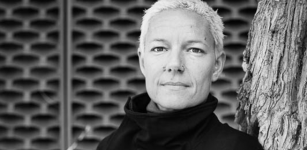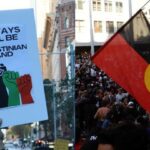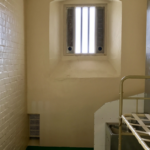Changing Attitudes: An Interview with Domestic Violence NSW CEO Moo Baulch

Last Saturday, NSW Labor committed to introducing 10 days’ paid domestic and family violence leave. The move follows a campaign launched in July by the Australian Council of Trade Unions to have the leave enshrined in the national employment standards as a mandatory entitlement.
Pressure is now mounting on Australian Labor leader Bill Shorten to make the 10 days’ leave part of Federal Labor’s policy platform. The party committed to introducing 5 days paid domestic violence leave back in 2015.
A number of large Australian companies have recently introduced domestic violence leave, including Telstra, Virgin Australia and IKEA. Currently, around one million workers in this country are covered by these sort of schemes.
At the NSW Labor meeting held at Sydney Town Hall on the weekend, NSW MP Trish Doyle said, “We can’t rely on good employers to provide domestic violence leave and care for their workers who are confronted with an unsafe situation.”
If 10 days’ paid domestic violence leave was put into modern awards, it would make Australia a world leader. However, the need for the scheme also highlights the culture of violence against women that is prevalent in domestic settings across the nation.
At appalling levels
Each week in Australia, two women or girls are killed by someone close to them. Since the age of 15, one in three women experiences physical violence. And one in four Australian women has experienced physical or sexual violence by an intimate partner.
The latest Australian Bureau of Statistic figures suggest that in 2015, there were 158 domestic and family violence-related murders recorded by police nationally.
During that same year in NSW, there were 30,467 reported cases of domestic and family violence assaults. This accounts for 400 incidents per 100,000 people. The number of reports in this state were dramatically higher than any other state or territory where figures were collected.
The time is nigh
National awareness of domestic and family violence in this country – and the need to implement better policies and programs to counter it – has grown over recent years. The naming of anti-violence campaigner Rosie Batty as Australian of the Year in 2015 brought the conversation to the fore.
In NSW, the Safer Pathway program is a state government domestic violence initiative that’s been piloted in certain areas since 2014. Last year, the NSW government announced it was investing $53 million for the program to be rolled out across the state over the next four years.
However, the Baird government also implemented the Going Home and Staying Home program in 2014. This so-called reform resulted in a large number of women’s refuges and specialty services being closed down, which has left women fleeing domestic violence with a dearth of options.
Domestic Violence NSW is the peak representative body for specialist domestic and family violence services in the state. Sydney Criminal Lawyers® spoke with chief executive officer Moo Baulch about why it’s a ripe moment to deal with this violence in the community, and how that can be done.
Firstly, in 2015 there were over 30,000 reported cases of domestic and family violence assaults in NSW. So Moo, are instances of this sort of violence on the rise?
Certainly we know the rates are going up significantly, primarily because of the proactive policing in this space. We know a lot more people are reporting to police. Police are taking more action. And so, the number is increasing exponentially.
Also, AVO breaches are being policed and prosecuted a lot more than they were five years ago. So if you speak to the NSW government, they would say, it’s because police are doing their job better and the legal system is doing its job better.
Anecdotally, we know that services are saying that the violence is actually increasing. If not in terms of actual amounts of violence, and the number of incidents, certainly in terms of the severity of violence. But that’s anecdotal at the moment.
Unfortunately, when we look at statistics around prevalence, the only thing that we really have that’s incredibly accurate are the statistics that we get from police.
Until we have better data from Safer Pathway, and we’ve had that consistently over a number of years, we won’t know whether there’s an actual increase or not.
What would you say it is about the culture in this state – or the broader Australian community – that has led to a situation where men are assaulting their partners, and other family members, so frequently?
We’ve got a pretty significant problem with violence in our culture more broadly. And with violence supportive attitudes.
If you look at things like the National Community Attitude Survey, you can see these attitudes of entitlement – “my wife or my partner and my kids are my property,” as it were. And that’s why some of the longer term prevention work – which is the need to fund long-term community attitude change – is so important.
If we have a society where we say there are some circumstances in which domestic and family violence, or sexual assault, can be excused – for example, if there is alcohol involved, or if somebody is remorseful afterwards, or apologetic – then that’s a real problem.
I think that’s an indicator that we have real issues in terms of our community attitudes.
And we are seeing these attitudes, not just in adults and older generations, but actually, some of the younger generation hold those attitudes too. It’s really important that we fund longer term work around gender equality, and understanding where these violent attitudes come from.
Currently, there’s a push to get 10 days paid domestic violence leave enshrined in the national employment standards. How necessary is it to get domestic violence leave established as a mandatory entitlement in this country?
The companies, corporations and organisations that already have domestic violence leave – or some form of domestic violence leave, whether it’s paid or unpaid – send out a really clear message that it’s something that is taken seriously within the culture of an organisation or a business.
I’m aware that there are some real challenges, particularly around making small businesses or small organisations able to offer that kind of level of leave. If you are running a small business, and you have to account for 10 days of paid leave every year for every staff member that could be a significant financial burden.
Leave on its own is not enough in my opinion. It really has to be about intense training within the workplace.
So whether you are a small or large organisation, you need to have really good structures around how people will be supported if they are experiencing domestic violence. And a good understanding culturally within the organisation of what domestic violence leave might be needed for, and how it might be accessed.
Certainly, some of the analysis coming now, in terms of those organisations that already have domestic violence leave, is the whole workforce is not taking that every year on an ongoing basis.
But I do recognise that is it a difficult and challenging conversation to have. So it really has to be part of a bigger kind of institutional change within organisations and services. I’d like to see some of the government departments stepping up around this.
There is some real changes that need to occur in terms of gender equality – it fits in with that bigger picture around equal pay.
If we have workplaces that have 10 days paid domestic violence leave, but we then have men and women earning radically different amounts of money to do the same job, then there’s something a bit wrong.
As I said, that sort of longer term cultural change, and a whole-of-community, whole-of-organisation, whole-of-business approach is really important.
You’ve already mentioned, the Safer Pathway program, which is a recent NSW government initiative. Last week, the NSW Bureau of Crime Statistics and Research (BOCSAR) released a report on the effectiveness of its police assessment system.
What does this program involve? And in your opinion, how effective is it?
Safer Pathway is based on a South Australian model, which is actually based on a UK model. It’s really a multi-agency approach to dealing with domestic violence. It’s very much a justice focused approach. It fits quite well with the national push around holding perpetrators accountable for domestic and family violence. But also pushing people through legal pathways.
One of its biggest successes – and I don’t know if this comes out just in the numbers through the BOCSAR report – is that it’s really good at getting government agencies to sit around the table, and be accountable, and take responsibility for their part in looking after primarily women and children, but also male victims, through things like housing, education, support and health.
You get all of the government agencies sitting around the table at Safety Action meetings. And they make short sharp interventions in terms of being able to rehouse a woman, making sure that her kids are safe, and that the school has a copy of the AVO. You often have Corrections sitting there at the table, so they are able to give information about the man being in custody, and when he is going to be released.
In terms of the actual support and the pathway to recovery, the longer term stuff for people who have been impacted by domestic and family violence, we don’t know yet – where people are being referred to and what kind of longer term support they are getting. Whether ultimately, two or three years down the track, they feel safer.
Those are the sort of things I’d be really interested in seeing and some evaluation. So at the moment we are looking at numbers of people moving through the system. I imagine, as this gets rolled out more widely across the state, we would see those numbers increasing.
And it may also increase the numbers of police incidents and reports as well, because of course, it’s going to be building that culture again of police being accountable for dealing with domestic and family violence. But, my biggest concern is that safety and long-term support.
We have a real issue here in NSW with affordable housing. So finding somewhere safe, long-term and affordable for a woman and her kids to live, after she’s left domestic violence, can be a real challenge. Not just in the centre of Sydney, but in regional centres and even in rural areas too.
It’s a very tough recovery pathway if you don’t have access to finances.
You might not have been allowed to work by your partner. You may have been living in fear, and not having any control over financial resources, or making any decisions about the household for a number of years. And that requires really nuanced support.
There’s been criticism of the NSW police approach in the past. But you’re saying it’s improved. Is that correct?
Look, it’s got better. I wouldn’t say it’s perfect. It’s a big institution the police force. Like any big institution they have some fantastic service, and also not so good.
I’ve definitely seen NSW police improve in terms of their leadership around this over the last five to ten years. It’s increased exponentially. And a big part of this is the driving of cultural change within the police. So police being made responsible for taking domestic violence seriously.
Ten years ago, a domestic was just that. It was something police didn’t like to deal with. They didn’t feel equipped to deal with it. They didn’t feel they had the legislation and the powers to be able to deal with it.
Now, they are far more responsible. And let’s face it, they are working in pretty difficult circumstances.
But, it also takes up the bulk of their work. So therefore, they need to be able to work in quite a sophisticated way to be able to make judgements around things like who the primary aggressor is, when they walk into a situation where violence has occurred.
They absolutely need to be well-resourced, really well trained, and have lots of ongoing training. There’s a gap around the training part. It’s always hard to get police into training, because the politicians want them out on the streets doing their job.
Back in 2014, the Baird government implemented the Going Home Staying Home policy. It led to many women’s refuges and specialty services being closed down.
In the wake of the implementation of this policy, what are the services out there like for women suffering domestic violence?
It’s patchy. And it’s not just in terms of the homelessness services. It’s patchy in terms of the other domestic violence support services as well.
What happened with the Going Home Staying Home reforms was that services were forced to work together in some situations. And there were big cultural differences often between larger NGOs and small specialist women’s services.
Also, services were forced to tender to be able to deliver domestic violence support that looks very different from place to place.
In some places you’ve got beautifully integrated services. You might have a specialist women’s service, where they’ve got refuge crisis support, a safe at home program, outreach, transitional housing, and child support workers. They might have domestic violence court advocacy services. They’ve got good connections with their local homelessness service, mental health, and drug and alcohol. All those sorts of things.
But that’s very patchy. It’s very dependent upon where you live in NSW, as to what sort of response you are going to get in terms of the service response.
That’s a real concern, because we’re putting out these really clear messages saying domestic violence will not be tolerated. And we in NSW have a strong stance against it. But actually, you need to put significant funding in terms of those specialist support services if women, kids and male victims are going to be able to recover properly in the long term.
If you compare NSW to Victoria and the $1.9 billion that’s just been put into the system down there, it just pales in comparison. We’re just not putting anywhere near the same kind of money into the crisis response, but also, the longer term housing and support. And of course, the long-term prevention as well.
Prevention takes a long time. It takes a long time to work with communities and to get that messaging around gender equality and understanding the prevalence of violence and how it works. Particularly within specific communities where you might have a whole range of dynamics going on. There might be poverty, racism, and a whole lot of challenges around how to access services as well.
Malcolm Turnbull announced in October last year that the government is delivering its Third Action Plan, which comprises of $100 million dollars’ worth of funding for various domestic and family violence programs.
These services are notoriously underfunded. How adequate was this measure from the federal government?
One hundred million doesn’t even touch the sides, when you look at Victoria with $1.9 billion. And the $100 million, really very little of that, has even gone into services. And a lot of that was not even new money. Some of that was money left over from the Women’s Safety package.
We need to be putting billions and billions of dollars into this at a federal and state government level if we’re really going to address the problem and it is a top priority for governments.
When you think of what it actually costs governments – in NSW alone its $5 or $6 billion a year, when you add up the policing, the criminal justice system, the support, recovery from trauma, the housing part, the health impact. It’s a huge public health issue.
If we are really genuine about recognising this as a key issue for NSW citizens, and for Australia more broadly, then we need to be putting billions of dollars into it. One hundred million is nowhere near enough.
And lastly, Domestic Violence NSW is the peak representative body for specialist domestic and family violence services in NSW. What sort of policies and changes is Domestic Violence NSW advocating for at present?
Significant funding into specialist services for a start. Because there’s a huge gap.
A system whereby a client, or somebody who needs assistance, is able to access the types of service they want – whether that’s a one off intervention or long-term support. It might be trauma specialist counselling over a period of five years.
This access for every person who experiences or is impacted by violence – whether that’s in the intimate partner context, or whether its historical impacts of growing up with violence in a family situation.
People need to be able to access support services in order to recover from that. And that recovery for some people might take a lifetime. For others it might be as simple as just moving away from the situation and violence, and being able to pick up their life and recovery quickly.
We believe that everybody should have the right to be able to access safe affordable housing, and the services that they need. It might be employment. It might be training. Whatever it is that you need to be able to recover in the longer term to get to the next part of your life beyond the violence.
It shouldn’t be that difficult, or that huge an expectation post-violence.
The other part that we really need to see is proper investment in education. So creating whole-of-school approaches to domestic and family violence. Having conversations within schools. Having proper training for teachers, but also parents, and for school administration people.
If we’re really serious about tackling this – and preventing violence in the longer term, and not dealing with the same problems, or the same volumes of problems we are dealing with now in a generation’s time – we have to put huge investment into our schools and our communities.
Because ultimately, you can put lots of money into the criminal justice pathways, and you can target high risk offenders – which is what we’re doing in NSW – but if you’re not looking at prevention, then really we’re going to be dealing with the same thing in twenty years’ time.
And we have a real opportunity now, that’s the thing. Domestic violence is on people’s agendas. They understand much better beyond just the physical impact of violence. They’re understanding trauma much better. We’re understanding what recovery looks like for people much better.
So there’s no excuse really, not to be tackling this now. We really could see the shifts within a generation, or so, if we’re willing to work across the range of different government and non-government spaces and community spaces and prioritise this as an issue.
Moo thanks very much for taking the time out to have this chat with us.
You’ve very welcome.







